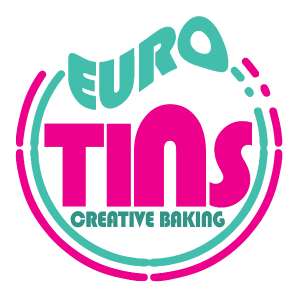In the bustling world of culinary arts, every kitchen tool has a story to tell and a role to play. Among these essential implements are the oven tray and the baking tray, two seemingly similar yet subtly distinct pieces of equipment that hold the key to culinary excellence. In this comprehensive guide, we'll explore the nuanced differences between these two kitchen staples, shedding light on their unique characteristics, functionalities, and optimal uses.
Check Our Collection of Trays for the Oven:
Understanding Oven Trays:
Let's start by dissecting the anatomy of the oven tray. Also known as a roasting tin, the oven tray is a robust and versatile vessel designed primarily for roasting meats and vegetables to succulent perfection. Crafted from durable materials such as stainless steel or aluminum, oven trays are built to withstand the rigors of high-temperature cooking in the oven.
Key Features of Oven Trays:
Deep Sides:
One of the defining features of an oven tray is its deep sides, which serve a crucial purpose during the roasting process. These elevated edges are essential for containing juices and drippings released by meats and vegetables as they cook, preventing spills and messes in the oven.
Sturdiness:
Oven trays are engineered with sturdiness in mind, capable of supporting the weight of hefty cuts of meat without buckling under pressure. This durability ensures that the tray maintains its integrity even when laden with substantial roasts, resulting in evenly cooked dishes every time.
Heat Conduction:
The material composition of oven trays plays a significant role in their performance. These trays are designed to facilitate efficient heat conduction, ensuring that heat is evenly distributed throughout the cooking process. This uniform heat distribution helps prevent hot spots and ensures that roasts cook to perfection, with consistent browning and caramelization.
Exploring Baking Trays:
Now, let's turn our attention to the baking tray, a versatile tool with a wide range of culinary applications beyond baking alone. Also referred to as a cookie sheet or baking sheet, this flat and shallow tin serves as a canvas for an array of baked delights, from cookies and pastries to sheet tin dinners and roasted vegetables.
Key Features of Baking Trays:
Flat Surface:
Unlike the deep sides of oven trays, baking trays boast a flat and shallow design, which is ideal for promoting even browning and crisping during the baking process. This flat surface allows heat to circulate around the food evenly, ensuring consistent results without any burnt or undercooked spots.
Non-Stick Coating:
Many modern baking trays come equipped with a non-stick coating or are made from non-stick materials, such as silicone or ceramic. This non-stick surface facilitates easy release of baked goods, preventing them from sticking to the tray and simplifying the cleanup process.
Versatility:
While baking trays excel in baking applications, their versatility extends far beyond the realm of pastries and cookies. These trays can also be used for roasting vegetables, toasting nuts, baking pizzas, and even as a makeshift surface for assembling and cooking sheet tin dinners. Their flat, spacious design makes them perfect for accommodating a variety of culinary creations.
The Distinction in Use Cases:
While oven trays and baking trays share certain similarities, such as their utility in oven-based cooking, their nuanced differences become apparent when considering their optimal uses.
Oven Trays:
Best suited for roasting meats and vegetables, thanks to their deep sides, sturdy construction, and efficient heat conduction properties. These trays excel at containing juices and drippings during the roasting process, resulting in flavorful and succulent dishes.
Baking Trays:
Ideal for a wide range of baking applications, including cookies, pastries, and other baked goods, thanks to their flat surface and non-stick coating. Additionally, baking trays can be used for various other culinary tasks, such as roasting vegetables, toasting nuts, and baking pizzas, making them a versatile addition to any kitchen.
Conclusion:
In conclusion, while oven trays and baking trays may appear similar at first glance, their distinct features and functionalities make them uniquely suited to different culinary tasks. Understanding the differences between these two kitchen essentials empowers cooks and bakers to select the appropriate tool for the job, ensuring optimal results in every culinary endeavor. Whether you're roasting a savory Sunday roast or baking a batch of delectable cookies, choosing the right tray is the first step towards culinary success. So, next time you embark on a culinary adventure, consider the nuances of oven trays and baking trays, and let them guide you towards gastronomic excellence.




